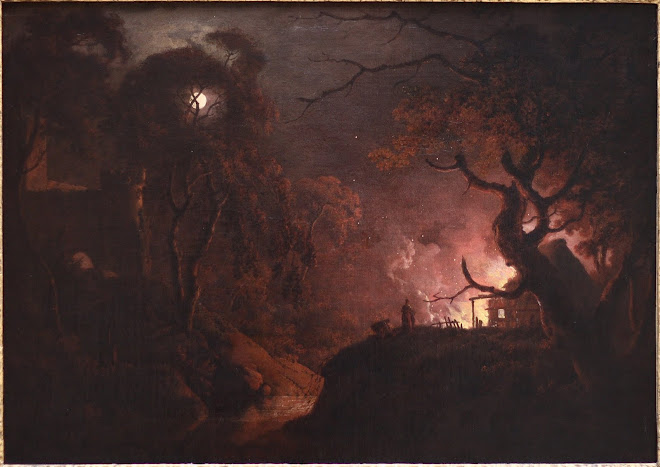What are the scenes of nature that elevate the mind¿ and produce the sublime sensation? Not the gay landscape, the flowerly field, or the flourishing city; but the hoary mountain, and the solitary lake; the aged forest, and the torrent falling over the rock. (Hugh Blair, Lectures, 1783)
The following paintings shown below suggest that the landscape can be a source of awe, mystery or even terror. These responses were associated in Turner's lifetime with an aesthetic category known as the Sublime.
In his influential Philosophical Enquiry into the Origin of our Ideas of the Sublime and Beautiful(1757), Edmund Burke distinguished between the Beautiful - things that are smooth, unthreatening and pleasurable - and the Sublime, things that are huge, obscure or terrible and arouse feelings that invigorate and elevate the mind.
These ideas spread widely, informing popular literature as well as aesthetic debate. In an age of change and uncertainty, the Sublime offered a kind of shock-tactic that affirmed the significance of an individual's innate response to nature. In the visual arts, it led artists to create a dramatic new vision of the natural world. But it was Turner who explored the potential of Sublime landscape imagery most comprehensively.
JMW Turner, The Tenth Plague of Egypt exhibited 1802
This painting illustrates a passage from the Bible describing one of the plagues inflicted on the Egyptians as divine punishment for enslaving the Jewish people: the killing of all the first-born sons of the Egyptians. It is uncomfortably crowded by threatening atmospheric effects, emphasising the power of forces beyond mankind’s control.
JMW Turner, Buttermere Lake, with Part of Cromackwater, Cumberland, a Shower exhibited 1798
American Sublime
The Apocolyptic Sublime
Thomas Cole, The course of Empire: Desolation 1836
Destruction is Cole's finest essay in the apocalyptic sublime. It is influenced by John Martin and JMW Turner, from whom Cole derived the swirling vortex of cloud. Cole's prophetic vision of calamity may have had contemporary resonances in December 1835, while Cole was working on canvas, a fire swept through lower Manhattan, causing massive destruction in the wall street area.
Frederic Edwin Church (1826 - 1900)
 |
| Iceberg Flotante 1859, |
 |
| Aurora Borealis 1865. |
Morning in the Tropics 1877
Church eagerly read the works of the English critic John Ruskin, who taught young artists that to observe nature closely was to 'follow the finger of God'. The scientific precision of Church's works can be compared with Pre-Raphaelite landscapes of the same period. Like many of his contemporaries, Church firmly believed in economic progress as part of the divinely-ordained destiny of the United States. Admiring the heroic efforts of pioneers in clearing the forests and creating new farmland, artists such as Church and Sanford Robinson Gifford nonetheless lamented the resulting destruction of the wilderness. The stumps of felled trees symbolised this cruel transformation.




